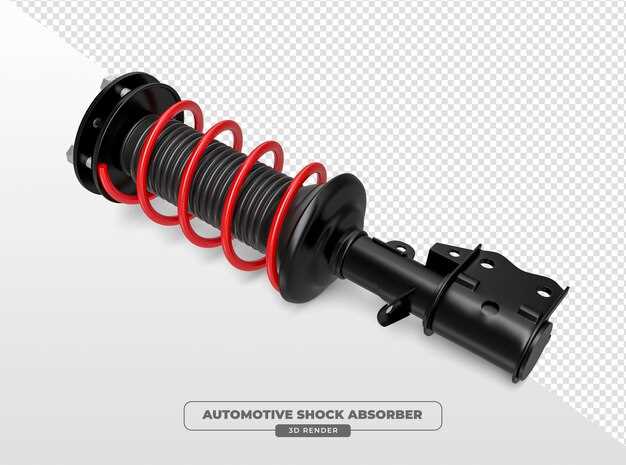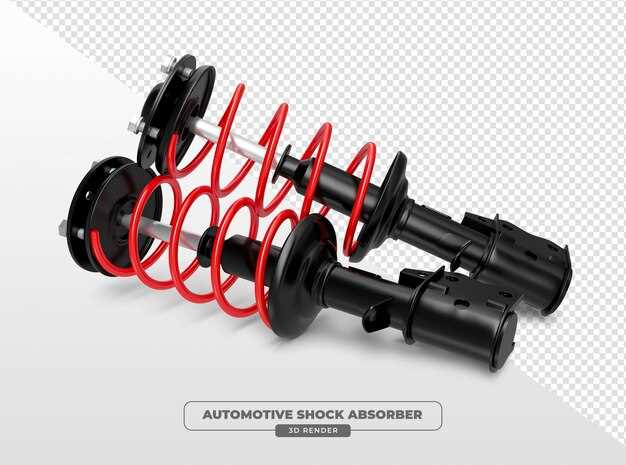
The world of automotive suspension modifications is vast and often daunting for enthusiasts seeking to enhance their vehicle’s performance and aesthetics. Among the most popular choices are coilovers and lowering springs, each offering unique advantages and drawbacks. Making an informed decision between these two options is crucial for achieving the desired handling characteristics and ride quality.
Coilovers are a complete suspension system that replaces both the springs and the shocks. This versatility allows for greater adjustability in terms of ride height, damping settings, and overall handling performance. They cater to drivers looking for a customized experience, whether for daily driving or competitive motorsport use. Conversely, lowering springs simply lower the vehicle’s ride height while utilizing the existing shock absorbers. This option is often less expensive and easier to install, making it appealing for those seeking a quick aesthetic upgrade without delving deep into suspension tuning.
In this article, we will delve into the key differences between coilovers and lowering springs, examining factors such as performance, cost, ease of installation, and long-term benefits. By the end, readers will be better equipped to choose the suspension solution that best aligns with their unique driving needs and preferences.
Coilovers or Lowering Springs: Which is the Better Option?
When it comes to modifying a vehicle’s suspension for improved handling and aesthetics, coilovers and lowering springs are two popular options. Each has its own advantages and considerations, making the choice dependent on individual needs and preferences.
Coilovers
Coilovers are a type of suspension system that combines a coil spring and a shock absorber into a single unit. They allow for adjustability in both ride height and damping settings, providing a versatile solution for enthusiasts.
- Adjustability: Coilovers typically offer adjustable ride height, allowing drivers to customize their vehicle’s stance easily. This can enhance both aesthetics and performance.
- Damping Control: Many coilover systems provide adjustable dampers, enabling users to tailor the ride quality and handling characteristics to their liking.
- Performance: Coilovers can significantly improve handling and cornering stability due to their stiffer setup and precise tuning options.
- Cost: Coilovers can be more expensive upfront compared to lowering springs, but they offer greater flexibility over time.
Lowering Springs
Lowering springs are a more straightforward solution for reducing a vehicle’s ride height. They typically replace the factory springs without modifying the shock absorbers.
- Affordability: Lowering springs are generally less expensive than coilovers, making them an attractive option for budget-conscious enthusiasts.
- Improved Aesthetics: Lowering springs provide a lowered stance, which many drivers find visually appealing.
- Easy Installation: The installation of lowering springs is often simpler, requiring less time and mechanical expertise.
- Limited Adjustability: Unlike coilovers, lowering springs usually do not offer height or damping adjustments, which can limit customization options.
Considerations

Choosing between coilovers and lowering springs involves several considerations:
- Budget: Determine how much you are willing to spend on suspension modifications.
- Intended Use: Consider whether you prioritize daily driving comfort, track performance, or aesthetic improvements.
- Future Modifications: If you plan to make further modifications to your vehicle, coilovers may be a better long-term investment.
- Installation Expertise: Assess your mechanical skills or the resources available for installation.
Ultimately, the choice between coilovers and lowering springs boils down to personal preference, driving style, and budget. Evaluating your specific needs will guide you toward the best suspension option for your vehicle.
Comparing Cost and Installation Complexity
When deciding between coilovers and lowering springs, cost and installation complexity are essential factors to consider. Both options cater to different budgets and technical skills, impacting the overall experience and satisfaction of the modification.
Cost: Lowering springs are generally more affordable than coilover systems. A typical set of lowering springs can range from $100 to $300, depending on the brand and vehicle compatibility. In contrast, coilovers usually start around $500 and can exceed $2000 for high-end models, which often feature adjustable dampening and ride height capabilities. While the initial investment for coilovers is higher, they provide more extensive customization and performance benefits, potentially justifying the cost for serious enthusiasts.
Installation Complexity: Installing lowering springs typically requires less technical expertise, making them a suitable option for DIY enthusiasts. Most installations can be completed within a few hours with basic tools and without any specialized equipment. A mechanical shop can handle this job at a reasonable labor cost if you prefer professional installation.
On the other hand, coilovers involve a more complicated installation process. Their design requires precise adjustments to ensure optimal performance, necessitating more advanced knowledge and tools. Additionally, coilover installations often include setting up adjustable components, which may require specialized alignment tools and techniques. Consequently, hiring a professional for coilover installation is more common, increasing overall costs.
In conclusion, while lowering springs may seem more budget-friendly and easier to install, coilovers offer superior performance and adjustability for those willing to invest more time and money. Ultimately, the choice depends on individual needs, budget constraints, and the desired vehicle performance outcomes.
Impact on Ride Quality and Handling Performance

When considering the choice between coilovers and lowering springs, the impact on ride quality and handling performance is a critical factor. Coilovers typically offer a more versatile suspension setup, allowing for adjustable ride height and damping settings. This means drivers can fine-tune their vehicle’s suspension to achieve a balance between comfort and performance. The ability to adjust the dampers can enhance the driving experience, especially on varying road conditions.
In contrast, lowering springs are generally a more straightforward option, lowering the ride height without the complex adjustability of coilovers. While they can improve handling by reducing body roll and lowering the center of gravity, the lack of damping adjustment means that ride quality may suffer. Lowering springs can create a stiffer ride, which may be uncomfortable on rough roads, leading to a harsher overall experience.
The impact on handling performance is significant for both options. Coilovers provide superior cornering capabilities due to their adjustable characteristics, allowing drivers to achieve optimal handling balance, especially in performance-oriented scenarios. This adaptability makes coilovers appealing to enthusiasts who participate in track events or require precise control during spirited driving.
Lowering springs, while less versatile, can still enhance handling to a certain degree by providing a lowered stance that improves aerodynamics and stability at speed. However, the fixed nature of lowering springs means they may not perform as well under changing conditions, such as during hard cornering or over uneven surfaces.
Ultimately, the decision between coilovers and lowering springs depends on the driver’s priorities. Those seeking maximum performance and customization will likely prefer coilovers, while those looking for a budget-friendly option that still offers improved aesthetics and handling may opt for lowering springs. Understanding these differences in ride quality and handling performance is essential for making an informed choice that aligns with individual driving preferences.
Adjustability and Long-Term Versatility Considerations
When comparing coilovers and lowering springs, one of the most significant factors to consider is adjustability. Coilovers typically come with adjustable ride height and damping settings, allowing for a customized suspension setup tailored to individual driving preferences and road conditions. This flexibility is particularly beneficial for enthusiasts who participate in motorsports or drive in varying environments, as it enables them to optimize their suspension for different scenarios.
In contrast, lowering springs generally offer a fixed drop, limiting the ability to adjust ride height once installed. While they can enhance the appearance of a vehicle and provide improved handling, the lack of adjustability means that any changes in driving style, load, or road conditions may necessitate a complete spring replacement.
Long-term versatility is another critical consideration. Coilovers often have a longer lifespan than lowering springs due to their robust construction and the ability to replace individual components, such as dampers or springs, when wear occurs. This modularity can be a cost-effective solution over time, as maintaining or upgrading specific parts is simpler than replacing an entire setup.
Furthermore, many coilover systems offer compatibility with aftermarket parts and tuning options, allowing enthusiasts to experiment with different setups as their needs evolve. Lowering springs, while generally simpler and more affordable upfront, may not provide the same level of adaptability as driving demands change or as modifications are made to the vehicle.
Ultimately, if adjustability and long-term versatility are high priorities, coilovers represent a superior choice. However, for those seeking a more budget-friendly option with less emphasis on customization, lowering springs remain a viable alternative.


